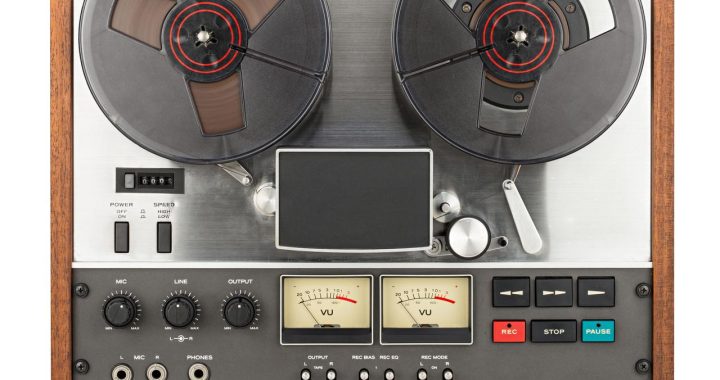An old computer storage method thought almost extinct shapes as a staple of data storage in the next decade.
Many think magnetic tape used for storing computer data is a dead medium, but it’s making a big comeback, with predictions that one day a tape will each store a hefty 400 terabytes of data. Just one of these tapes could store the complete 2010 Britannica Deluxe Edition on DVD — 3.35 gigabytes — 119,000 times over.
If you watch 1960s movies, you may see computer rooms depicted with rows of magnetic tapes on reels mounted inside panels, continually spinning and stopping in quick jerky motions, reading and writing data as they go.
Sure, computers of that era used lots of other media, such as punched cards, punched tapes and magnetic drum memory. Computer installations often housed disk reading and writing units the size of washing machines. The multi-plattered disks inserted into them might hold 200 megabytes, a capacity that these days fits on a tiny microSD card. However, magnetic tape was the backbone of old mainframe computer storage as convenient portable media.

I remember as a student in the early 70s seeing magnetic tapes delivered to Monash University’s computer centre that processed data from local enterprises. The centre housed two mainframe computers: an IBM System 360 and Control Data system, which together took up most of the ground floor.
Payroll customers typically sent in a tape master file of their employees’ details along with a transaction tape of salaries for that week. The computer system sequentially would match records on each tape to produce cheques printed on computer paper with perforated edges.
Completed printouts of cheques and those magnetic tapes sat on the desk of the centre’s service centre waiting to be collected, often by taxis.
Reeling in the years
Nowadays it’s hard to imagine company payroll cheques and tapes being ferried around by taxis. It seems an incredible security risk, but in 1973 you wouldn’t get far stealing computer tapes and trying to cash thousands of cheques. These were pre Bankcard days.
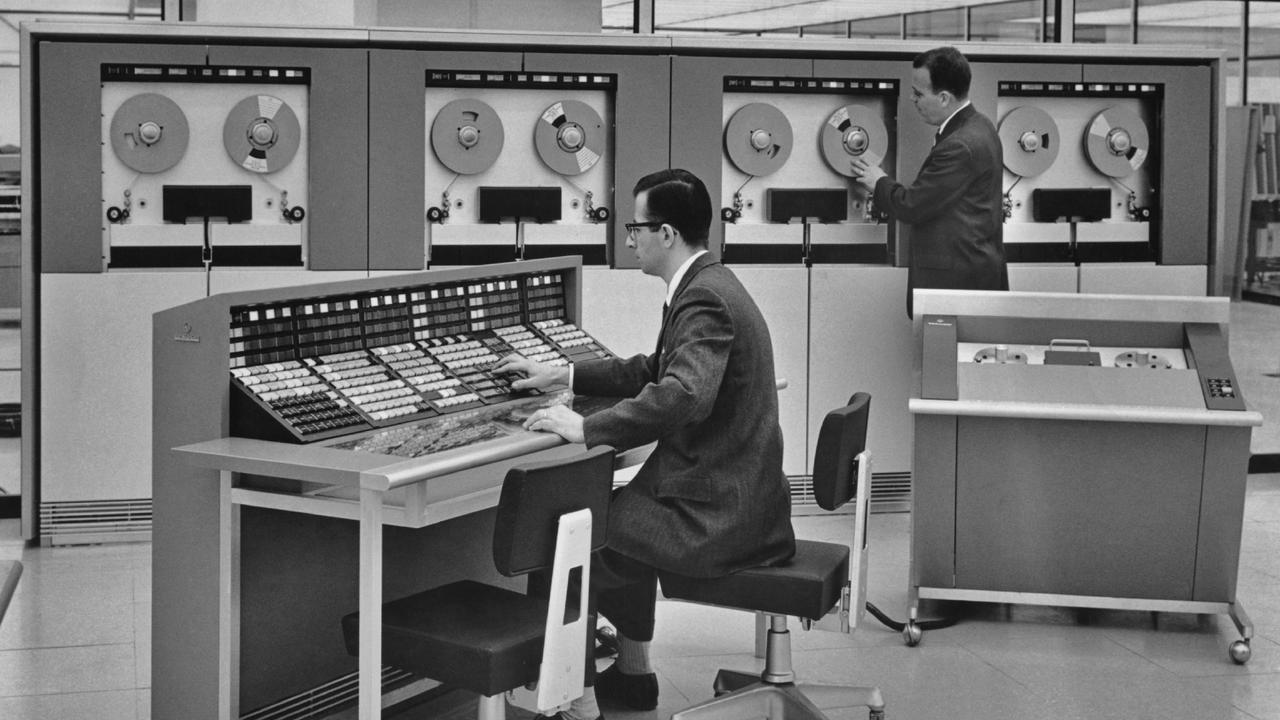
At the time, we students wrote business programs in the computer language COBOL, an acronym for common business-oriented language, and the rotation of magnetic tapes in payroll programs was termed a “grandfather, father, son” update. Note that the lead developer of COBOL had been a woman, mathematics professor and US Navy rear admiral Grace Hopper.
Across the decades we’ve used ferric-oxide tapes in many forms, including as reel-to-reel compact audiocassettes in the 70s and 80s until they were superseded by CDs in the early 90s.
Magnetic tape was used extensively in the early days of the television industry, with higher quality Betamax and movies on VHS, until optical disc digital technology superseded it.
Tape media enjoyed new life in the early home computer days in the 80s via the Commodore 64 computer’s “datassette” cassette player, which was used for inputting games and programs. With a data transfer speed of less than 100 bytes per second, you could watch the grass grow and the paint dry in sequence waiting for a game to load. Tapes typically held 150 kilobytes a side, the storage taken by one low-resolution photo today. Apple II software in the late 70s also was offered on tape data cassettes.
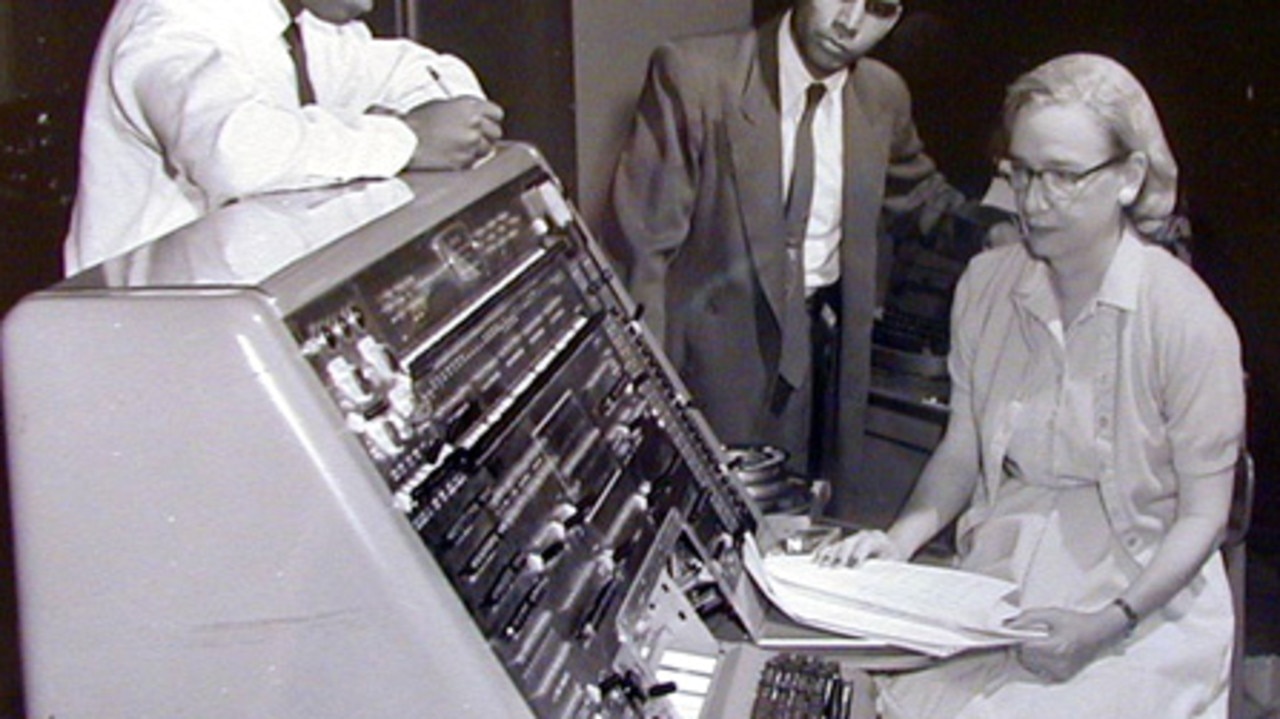
In the 80s, early personal computers used magnetic tape refashioned into flexible spinning disks called floppy disks. The computer’s operating system, programs and data would all fit on to one or two 5¼-inch floppy disks with just 360KB capacity, again collectively taking up less space than a low-resolution image would today. Across time faster hard drives became available to home computers, but initially their capacity was limited to 10MB or 20MB. It was surprising what you could fit on one.
You’d think with this history that magnetic tape would quietly have gone the way of the dodo.
But the opposite seems the case with Sony and Fujifilm rolling out new age magnetic tape disks in cartridges with astonishing capacity.
Next year, magnetic tape storage is set to break new ground with tapes that store 60TB of compressed data. That’s 60,000GB of data on a single magnetic tape, or the equivalent of 167 million early 80s floppy drives.
In the late 90s HP, IBM and Seagate began developing an open standard tape format called Linear Tape-Open, or LTO, and it has been getting better with each generation. The current version is LTO-8. Next year’s LTO-9 will be capable of storing 24TB of data and 60TB of compressed data, more than double current capacity. Sony and Fujifilm manufacture the tapes.
Fast-forward to today
Fujifilm Australia’s general manager of recording media, Marc Van Agten, says whereas old tapes were read sequentially, from go to whoa, metadata at the start of a modern tape makes it easy to locate information on it.
Tapes are housed in cartridges about half the height of a VHS tape and roughly the same width. The tape initially is positioned at the midpoint, which decreases data access time, and tapes can be accessed at specific points rather than read sequentially, Van Agten says.
Magnetic tape reading and writing speeds once were notoriously slow, but the current LTO-8 transfer speed is about 472MBps. That’s 37 times the premium data transfer speed on the National Broadband Network.
Van Agten says this new tape medium offers a less expensive way for businesses to archive large volumes of data. It’s also used in data centres for deep archiving of data not frequently accessed.
He says an LTO-7 tape typically costs $100 to store about 8.4TB. You’re up for under $10,000 per reader. “The advantage of that (tape) is that it’s not drawing any power,” Van Agten says. “It’s sitting in an automated library.”
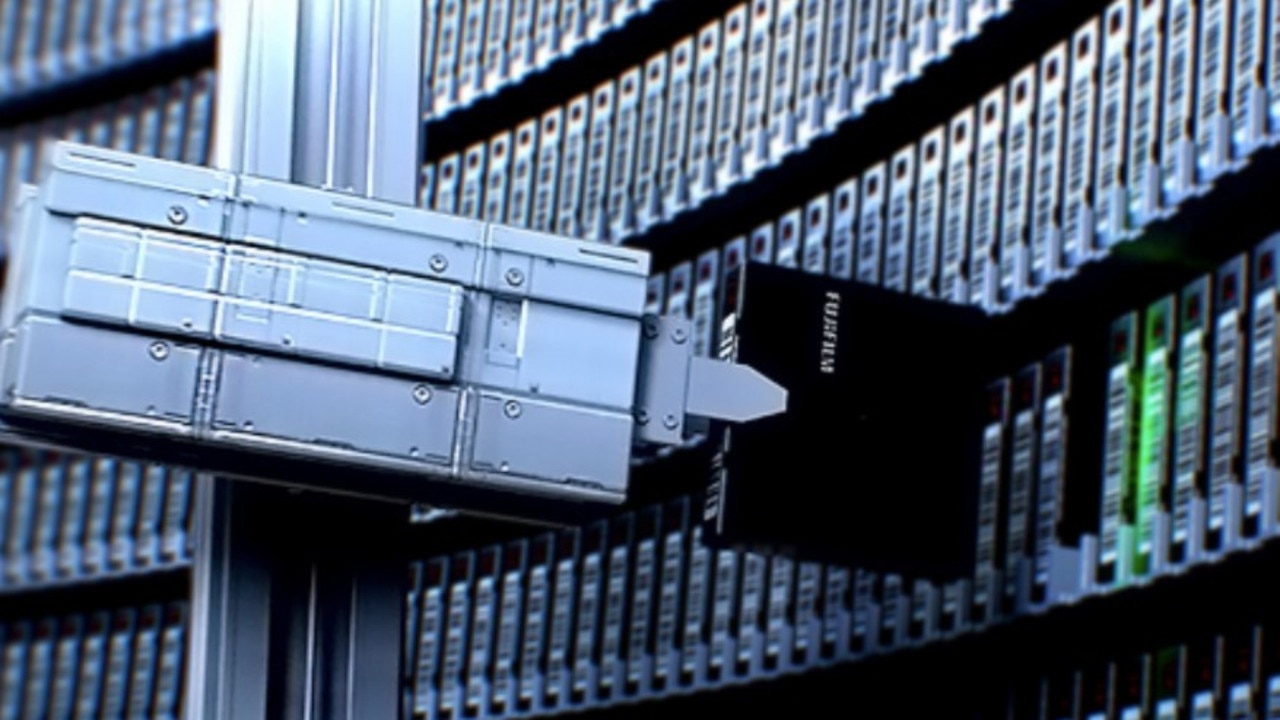
These tape cartridges should last about 30 years based on accelerated testing, Van Agten says. The issue is whether compatible tape drives are still available to read them. For example, LTO-8 drives may read only LTO-8 and LTO-7 media from 2015.
Other services have developed around tape. Iron Mountain will collect copies of your tape cartridges daily and store them off-premises for retrieval in case of fire or flood.
Firms such as IBM sell tape library systems that are like jukeboxes with a robotic arm that insert a selected tape cartridge from a carousel into a reader. Carousels could hold 400 tapes, which are identified by a barcode.
IBM Asia Pacific vice-president of hybrid cloud Jim Freeman says the resurgence of magnetic tape will surprise many. “Everybody thought tape is dead,” he says. “This is man bites dog versus dog bites man. It’s like: You’re kidding me, tape is growing?”
He says uses include avoiding malware. Business data can be inexpensively stored on tape on site but offline, away from hackers and malware. “There’s no reason that tape can’t be absolutely part of the operation,” he says.
No stopping tape
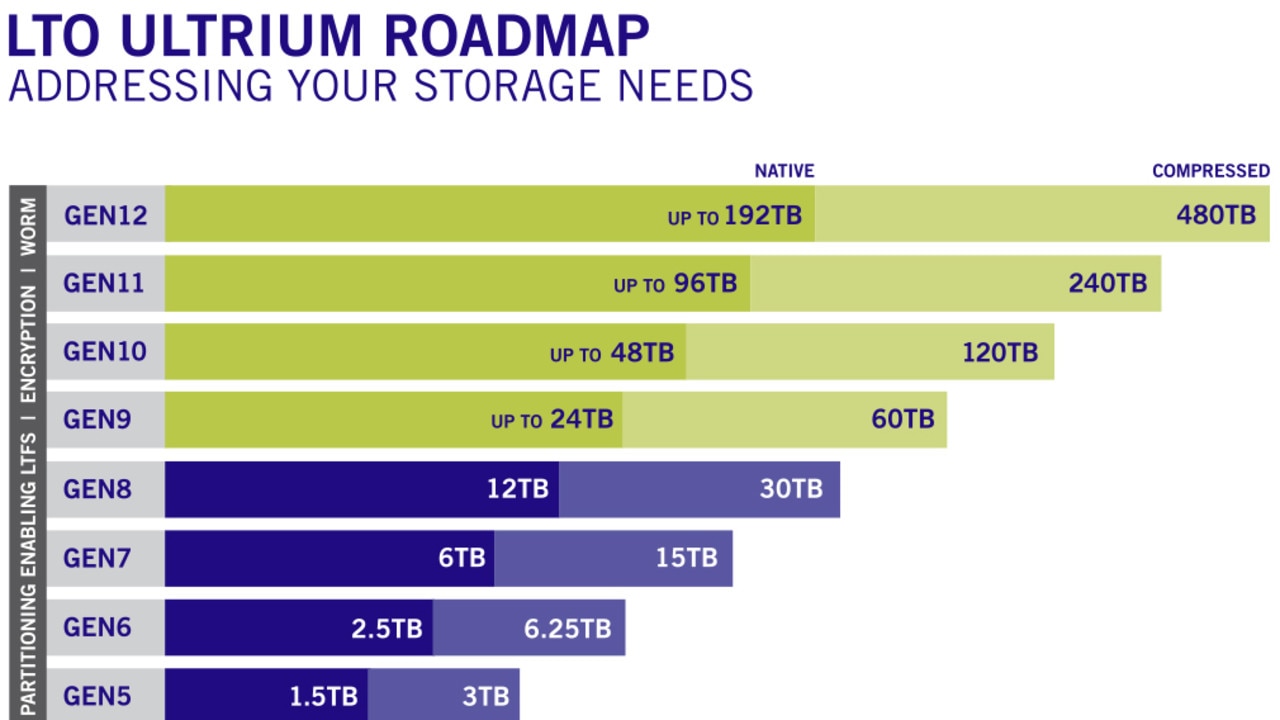
LTO tape is still relatively new in its life cycle. “There’s no question that it’ll get faster and faster,” Freeman says.
The LTO development road map suggests tape cartridges will be around for years, and they’ll be needed.
The Data Management Institute says tape is showing greater capacity growth than any other media and next year tape will be required to host more than 60 zettabytes (60 billion TB) of new data that cloud providers expect to see. That figure is predicted to jump to 160ZB by 2024.
Tape capacities, meanwhile, are increasing. LTO-12 tapes expected around 2028 will hold 192TB of native data and 480TB of compressed data.
Sony and IBM have demonstrated the possibility of a 330TB tape, with data stored at 201 billion bits per square inch.
In a published paper, Fujifilm says its strontium-ferrite magnetic particle technology will allow for cartridges to store 400TB of data or more. This involves even denser packing of data.
That capacity per tape — 400TB or 400,000GB or 400 million MB — makes 100MB stored on an old-age 732m tape look positively paltry. Yet businesses and corporations managed to run payrolls, stock and invoicing systems with this medium.
Published in The Australian newspaper.
